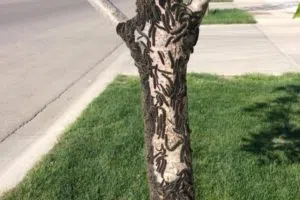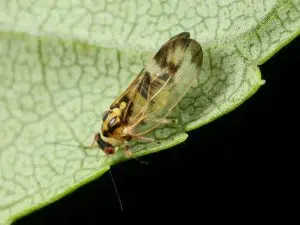With summer starting soon, a number of unwelcome guests may start showing up in yards and parks.
City of Saskatoon entomologist and pest management supervisor Jeff Boone provided an update on some of the most visible and common problem wildlife around the city.
Tree-wrecking psyllids subsiding
Boone said we should see far fewer cottony ash psyllids this year.
The bugs, which consume certain types of ash trees, have run rampant through Saskatoon’s urban forest for the last few years.
“I think that story, for the most part, a lot of the damage is done. The insects have come through, the trees have declined,” Boone said, noting the pests have now mowed through about 75 to 80 per cent of the city’s vulnerable trees.
With their food sources largely depleted, Boone said the psyllids should continue to decline. Meanwhile, he said city staff would be doing a large number of removals of dead ash trees.
Jackrabbit population up
While the city doesn’t do any formal tallying of the jackrabbit population, Boone said call volumes and sightings have risen sharply.
He said the best way to protect property is to take measures to keep the hares out.
“That’s probably the priority with jackrabbits, is protecting the trunks of trees as they chew on the bark,” Boone said. “Also, things like fencing can of course help to keep jackrabbits out of backyards.”
Boone also noted that using poison to control jackrabbits is illegal.
‘Enough is enough’: Tent caterpillar numbers expected to decline
Many in Saskatoon have likely seen more than their fill of tent caterpillars over the last few years. Boone said he sympathized.
“It has been five years of years of tent caterpillars and enough is enough,” he said with a chuckle.
 Outbreaks of the caterpillars, which have been seen swarming over yards and parks and sidewalks all around Saskatchewan, typically last about seven years, according to Boone.
Outbreaks of the caterpillars, which have been seen swarming over yards and parks and sidewalks all around Saskatchewan, typically last about seven years, according to Boone.
He said 2018 saw the numbers of tent caterpillars in Saskatoon begin to dip and this year would likely see that trend continue.
“We don’t have a formal monitoring program, but we are seeing fewer egg bands in our inspections of trees,” Boone said. “So I would say there’s a good chance that outbreak is coming to an end.”
While unsightly to many, Boone stressed that tent caterpillars are completely harmless to humans.








